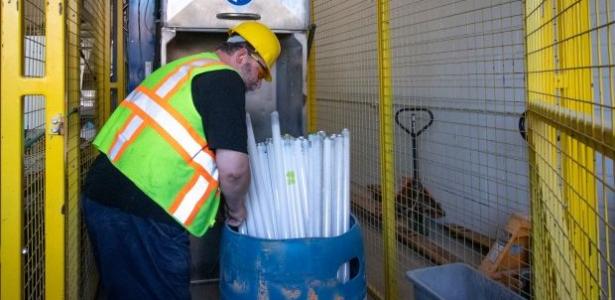Feds unveil plan for safe disposal of mercury-filled light bulbs

The federal government has unveiled its national plan for disposing of mercury-filled light bulbs in an environmentally responsible way and decreasing how much of the toxic substance ends up in landfills.
The national strategy for the safe and environmentally sound disposal of lamps containing mercury was tabled on Wednesday, as part of Bill C-238, a private member's bill made law two years ago.
The plan includes a proposal to amend regulations that would prohibit the importing and manufacturing of certain lamps containing mercury by 2023 or 2028. It's estimated this measure would reduce the use of mercury in lamps in Canada by 55 per cent.
The strategy aims to increase public awareness — which it notes is currently low — that such light bulbs shouldn't wind up in landfills and that energy efficient, mercury-free options are available, such as LED or halogen.
It encourages provinces to implement or strengthen so-called extended producer responsibility programs, which leave producers on the hook for disposing of products that have reached the end of their life cycle.
Four provinces — British Columbia, Manitoba, Quebec and P.E.I. — currently have such a program, while Nova Scotia has a voluntary diversion program.
The plan also said Environment and Climate Change Canada will study the potential for and effectiveness of regulatory measures such as landfill disposal bans, with an interim report expected in 2022.
Mercury is listed as a toxic substance under the Canadian Environmental Protection Act, and can be harmful to both the environment and people.
Between 250 and 400 kilograms of mercury ends up in Canadian landfills every year, according to the Environment Department's website.
Dartmouth-Cole Harbour MP Darren Fisher of Nova Scotia had introduced the private member's bill, which received royal assent in June 2017.
Fisher acknowledged the strategy is not going to eliminate the problem.
"We are getting better. We will do much better," said Fisher, adding that the national diversion rate of mercury-containing light bulbs from landfills was 10 per cent in 2012, compared with 34 per cent in 2017.
Fisher noted the bill was inspired by a company called Dan-X Recycling, which recycles mercury-containing light bulbs at its plant in Dartmouth, N.S.
David Hall, president and CEO of that company, said although he welcomes the strategy, he doesn't think it goes far enough.
Hall said the safe disposal of mercury-containing light bulbs should be mandatory and regulated across the country.
"I think the only thing the national strategy could do is educate people that there is a way to truly recycle."
Fisher said the municipalities and provinces each have a patchwork of regulations, so regulating the recycling of mercury-containing light bulbs across the country is not an easy task.
"That's why we need to have everyone on board. We need to have Indigenous governments, we need to have all interested non-profits, we need to have all municipalities and all provinces on the same board here," he said.
Fisher noted only about 10 per cent of Canadians are aware there is mercury in certain types of light bulbs. He said the first step in implementing the plan is a public awareness campaign.
A report on the effectiveness of the strategy is due by 2024.
[Source: CBC.ca]